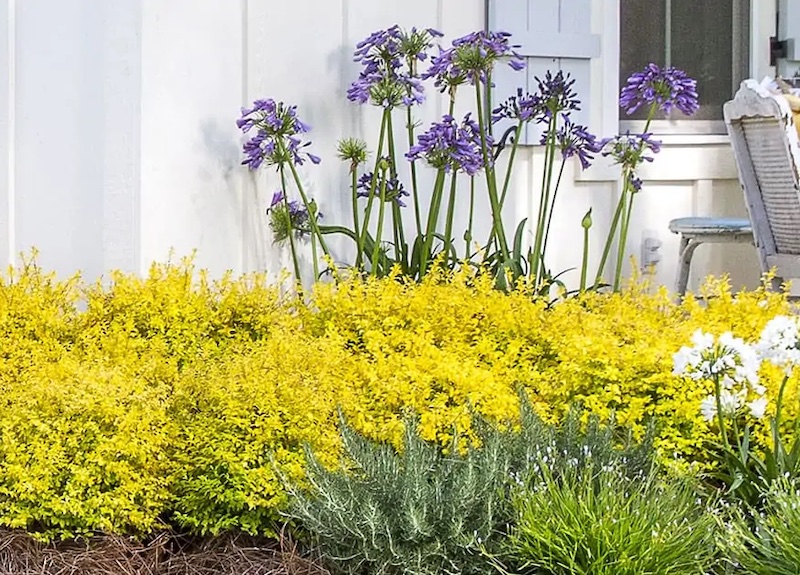Agapanthus Varieties: Choosing the Best for Your Landscape
Agapanthus Varieties: Choosing the Best for Your Landscape
Blog Article
Letting Loose the Secret to Effective Agapanthus Farming: Tips and Tricks for a Flourishing Yard
In the realm of horticulture, cultivating agapanthus efficiently needs a calculated method that encompasses various aspects of plant care. By comprehending the nuances of agapanthus farming, one can develop a setting where these plants prosper and flower perfectly.
Planting Agapanthus: Ideal Practices
When growing Agapanthus, correct dirt prep work is crucial for making sure successful development and growth of these lovely flowers. Agapanthus, typically called Lily of the Nile or African lily, thrives in well-draining dirt with a somewhat acidic to neutral pH level - Agapanthus. Before growing, it is vital to amend hefty clay soils with raw material such as garden compost or peat moss to improve water drainage and provide crucial nutrients for the plants
To grow Agapanthus, select a place that obtains full sunshine to partial color, as this will advertise healthy development and abundant blooming. Dig a hole two times the diameter of the plant's root ball and put the Agapanthus at the very same depth it was previously growing. Carefully backfill the hole with soil, pushing down firmly to remove any air pockets around the roots.
Water the newly planted Agapanthus extensively and remain to maintain the dirt uniformly moist, specifically throughout the plant's energetic expanding period. Agapanthus. Applying a balanced plant food once a month can further support the plant's growth and blooming. By following these finest techniques for planting Agapanthus, you can produce a stunning display screen of these exciting blossoms in your garden
Ideal Dirt Conditions for Agapanthus
For optimum growth and growing success of Agapanthus plants, guaranteeing the dirt conditions are perfect is essential. Agapanthus prefers soil that is abundant in nutrients, so integrating a well balanced plant food during the growing period can promote healthy and balanced development and vibrant blooms.
:max_bytes(150000):strip_icc()/agapanthus-growing-guide-7368912_04-66a3f4cf245b4332b28954dd37c784f5.jpg)
Watering and Feeding Tips
To make sure healthy development and vibrant blossoms, correct watering and fertilizing techniques are crucial for successful Agapanthus cultivation. Agapanthus plants take advantage of regular watering, specifically throughout the growing period. It is advised to water deeply as soon as a week, guaranteeing the soil is damp yet not waterlogged. Throughout hot weather or in pots, even more frequent watering may be necessary to avoid the soil from drying out totally.
When it pertains to fertilizing Agapanthus, a balanced fertilizer with equal components nitrogen, phosphorus, and potassium can be applied in the spring to advertise healthy and balanced development and blooming. Slow-release fertilizers are optimal for providing nutrients progressively over an extensive period. Avoid over-fertilizing, as this can lead to excessive vegetation development at the expenditure of blooms.
Furthermore, integrating raw material like compost into the dirt can boost nutrient levels and boost dirt structure, helping in the overall wellness of the Agapanthus plants. By complying with these watering and feeding tips, gardeners can guarantee their Agapanthus plants flourish and produce stunning screens of flowers.
Trimming and Deadheading Strategies
Appropriate pruning and deadheading techniques play a crucial duty in maintaining the wellness and visual appeals of Agapanthus plants, enhancing the crucial practices of watering and feeding for successful cultivation. Pruning Agapanthus involves eliminating spent blossom heads, yellowing or dead fallen leaves, and general shaping of the plant to advertise better growth. Deadheading, the process of getting rid of faded blossoms, not only improves the plant's look yet also urges additional growing.
When deadheading Agapanthus, it is a good idea to trim off the blossom stem at the base using sharp, clean shears. This procedure redirects the plant's power from seed manufacturing back right into origin and vegetation growth, advertising a healthier and extra robust plant. Regular deadheading can expand the blooming period of Agapanthus and avoid self-seeding, which can cause congestion.
In regards to trimming, Agapanthus generally take advantage of a light trim after flowering to Full Report clean up the plant and encourage fresh development. Reducing the invested blossom stems and getting rid of any damaged or dead browse around here vegetation helps keep the plant's vigor and general look. Nevertheless, it is vital to avoid reducing right into the crown of the plant, as this can damage its wellness.

Protecting Agapanthus From Vermins and Diseases
Carrying out reliable pest and illness monitoring techniques is essential to guarding the health and vitality of Agapanthus plants in growing. One usual insect that impacts Agapanthus is the Agapanthus borer, a caterpillar that passages into the plant, triggering damage to the fallen leaves and flowers.
In addition to bugs, Agapanthus are vulnerable to conditions such as root rot and fungal leaf places. By remaining vigilant and attending to insect and illness issues immediately, garden enthusiasts can assist their Agapanthus thrive and grow.

Final Thought
To conclude, successful growing of agapanthus calls for appropriate planting methods, ideal dirt conditions, sufficient watering and feeding, normal pruning and deadheading, and protection from insects and illness. By following these methods and tips, garden enthusiasts can make certain a growing yard filled with beautiful agapanthus flowers. Agapanthus. Bear in mind to keep constant treatment and focus to detail to advertise the wellness and long life of these stunning plants
When planting Agapanthus, correct soil preparation is vital for ensuring successful development and development of these gorgeous blossoms.Water the recently planted Agapanthus thoroughly and proceed to maintain the dirt equally wet, particularly during the plant's active expanding period.For ideal growth and flowering success of Agapanthus plants, making certain the dirt conditions are excellent is important. When transplanting or Check This Out planting Agapanthus, guarantee the dirt is well-prepared to provide the required foundation for the plants to develop themselves successfully. One typical bug that impacts Agapanthus is the Agapanthus borer, a caterpillar that tunnels right into the plant, triggering damages to the fallen leaves and flowers.
Report this page